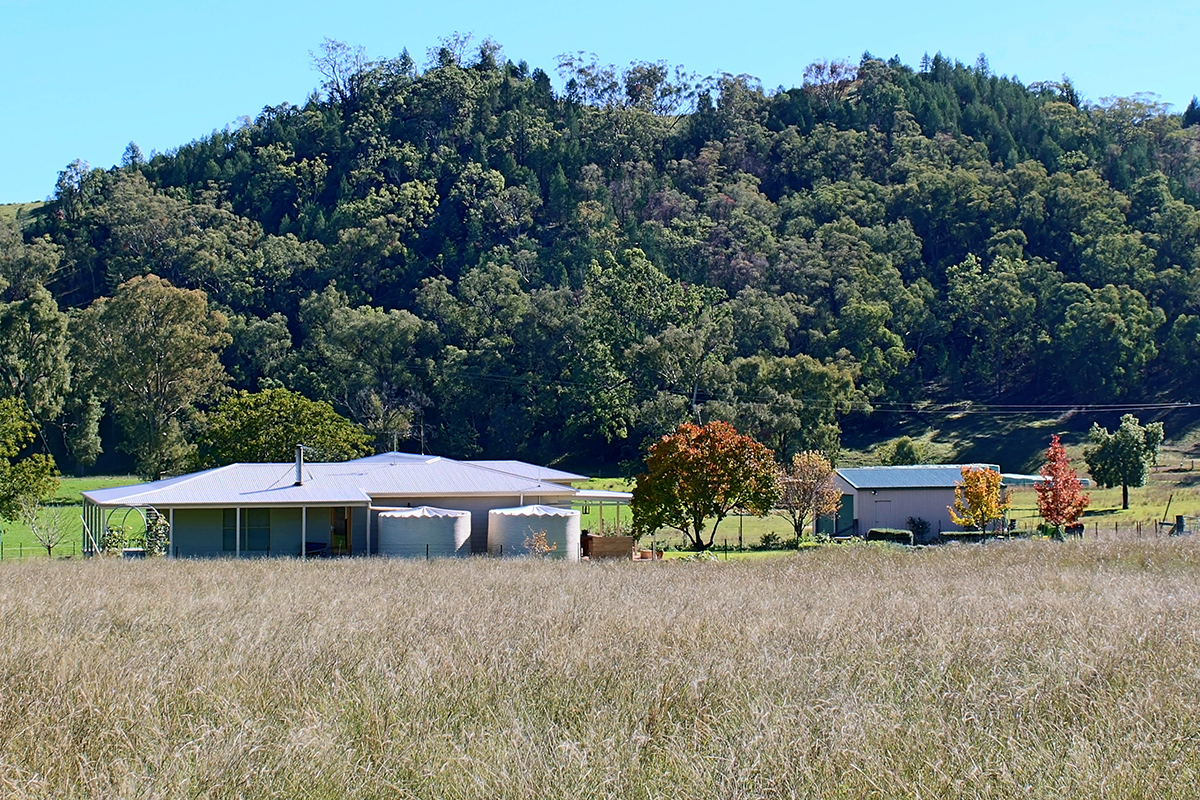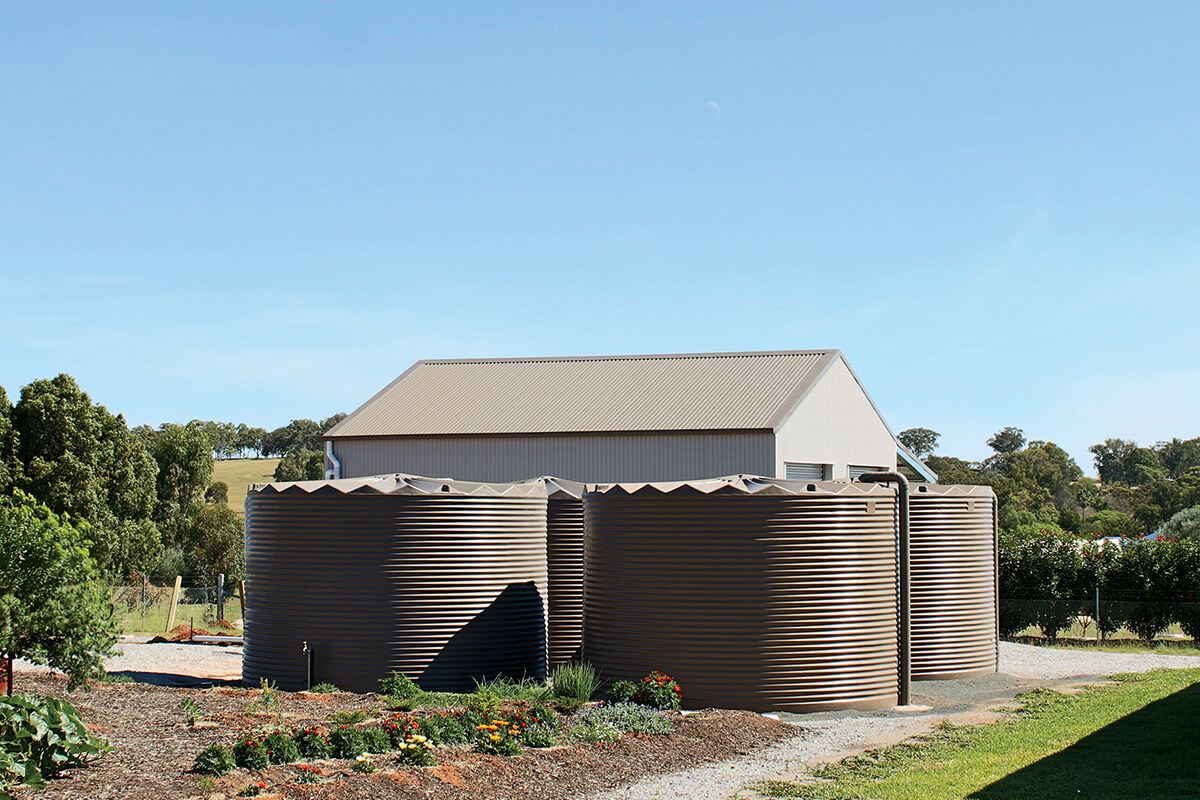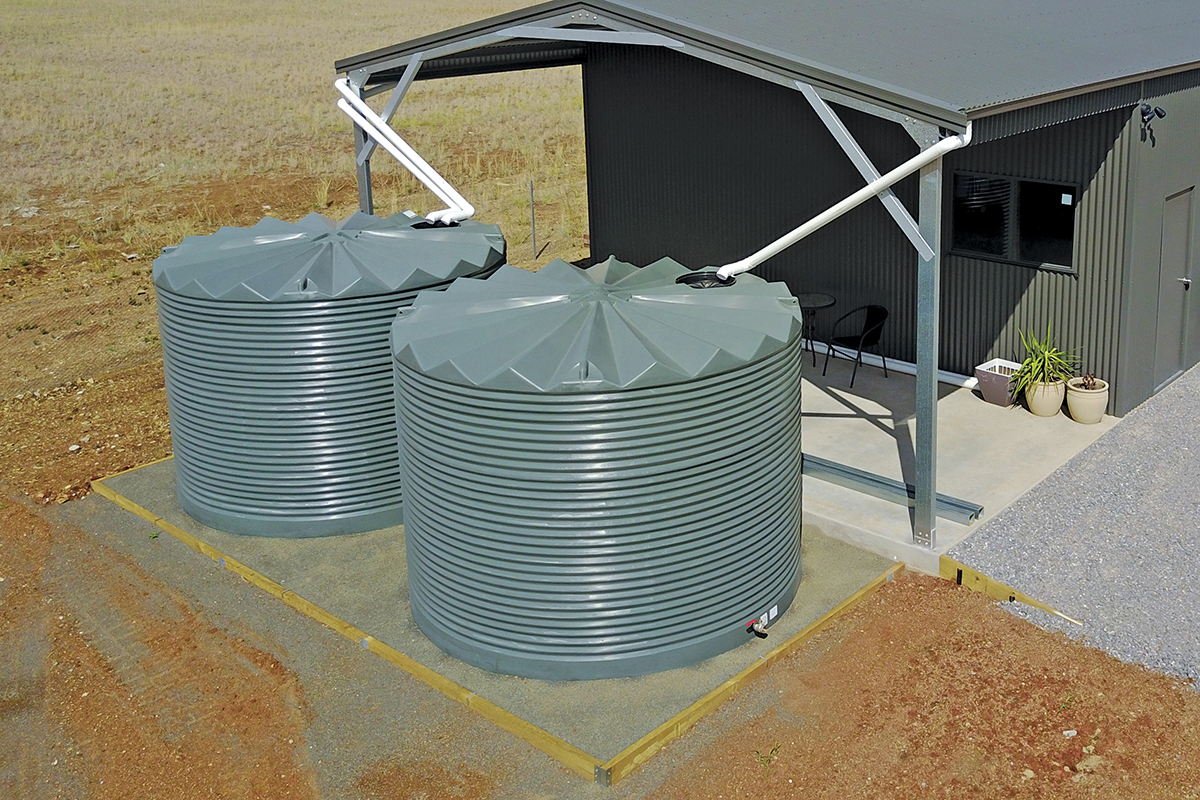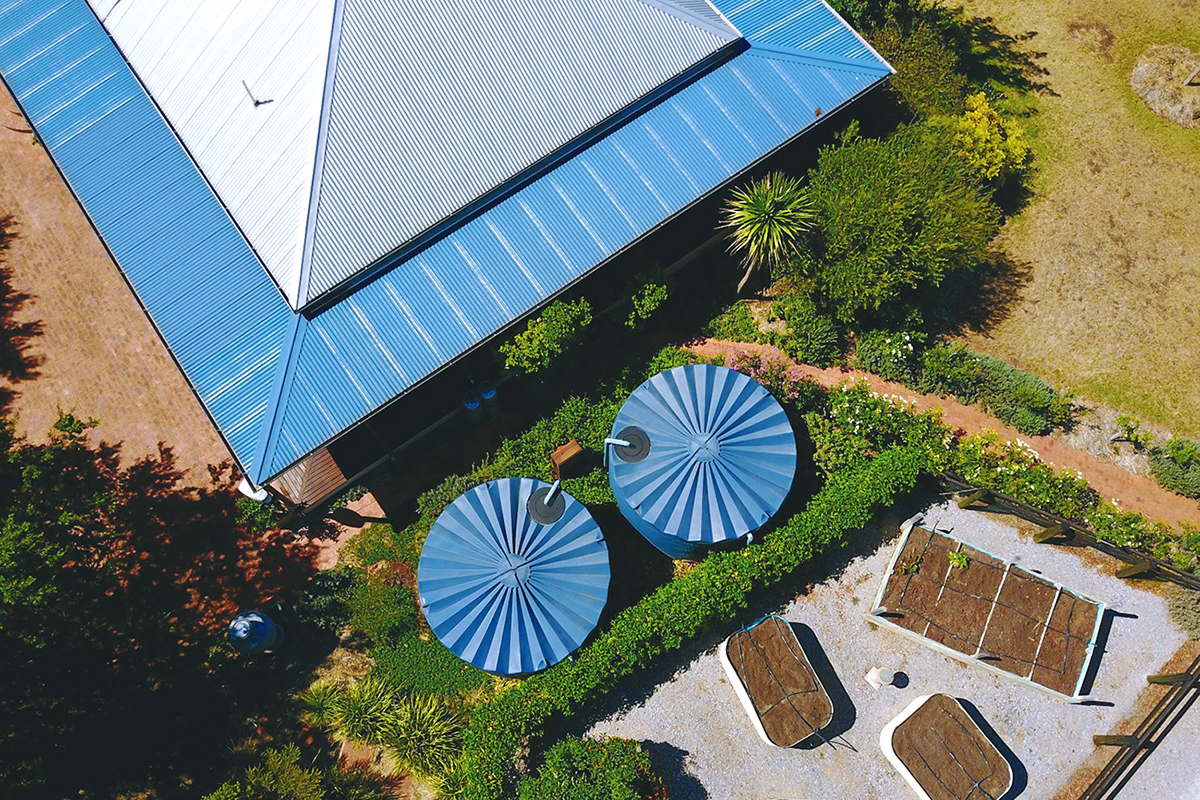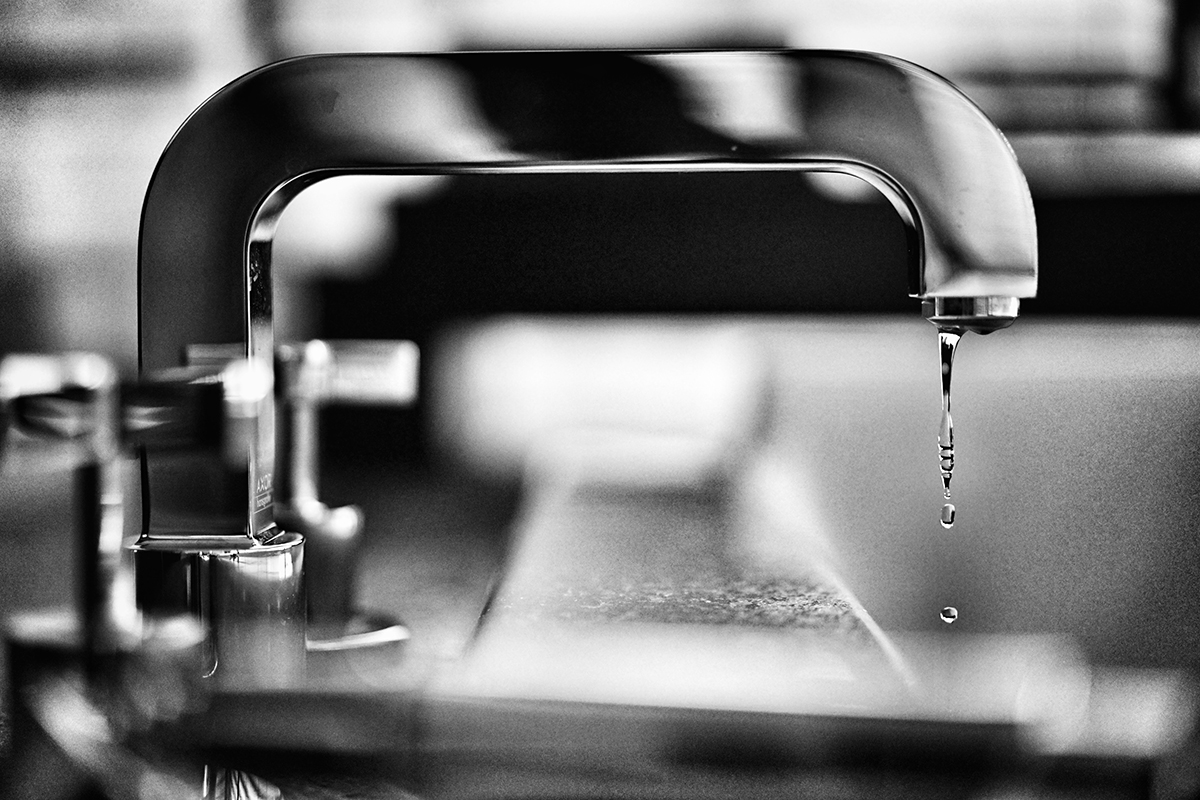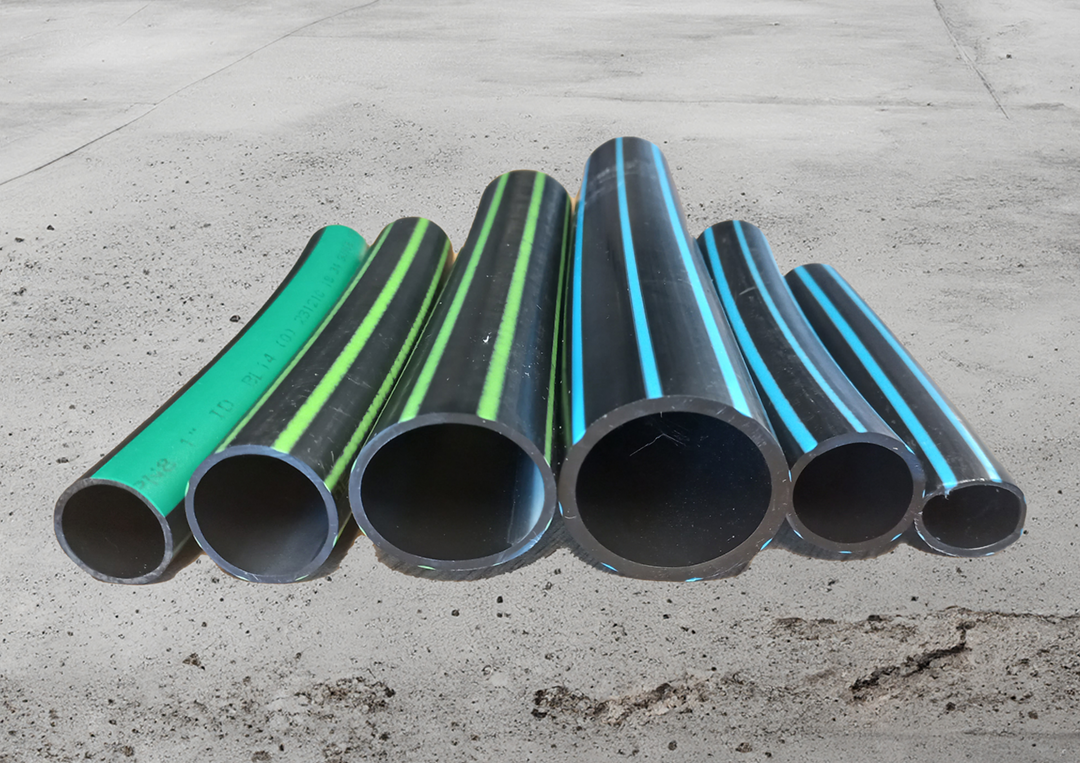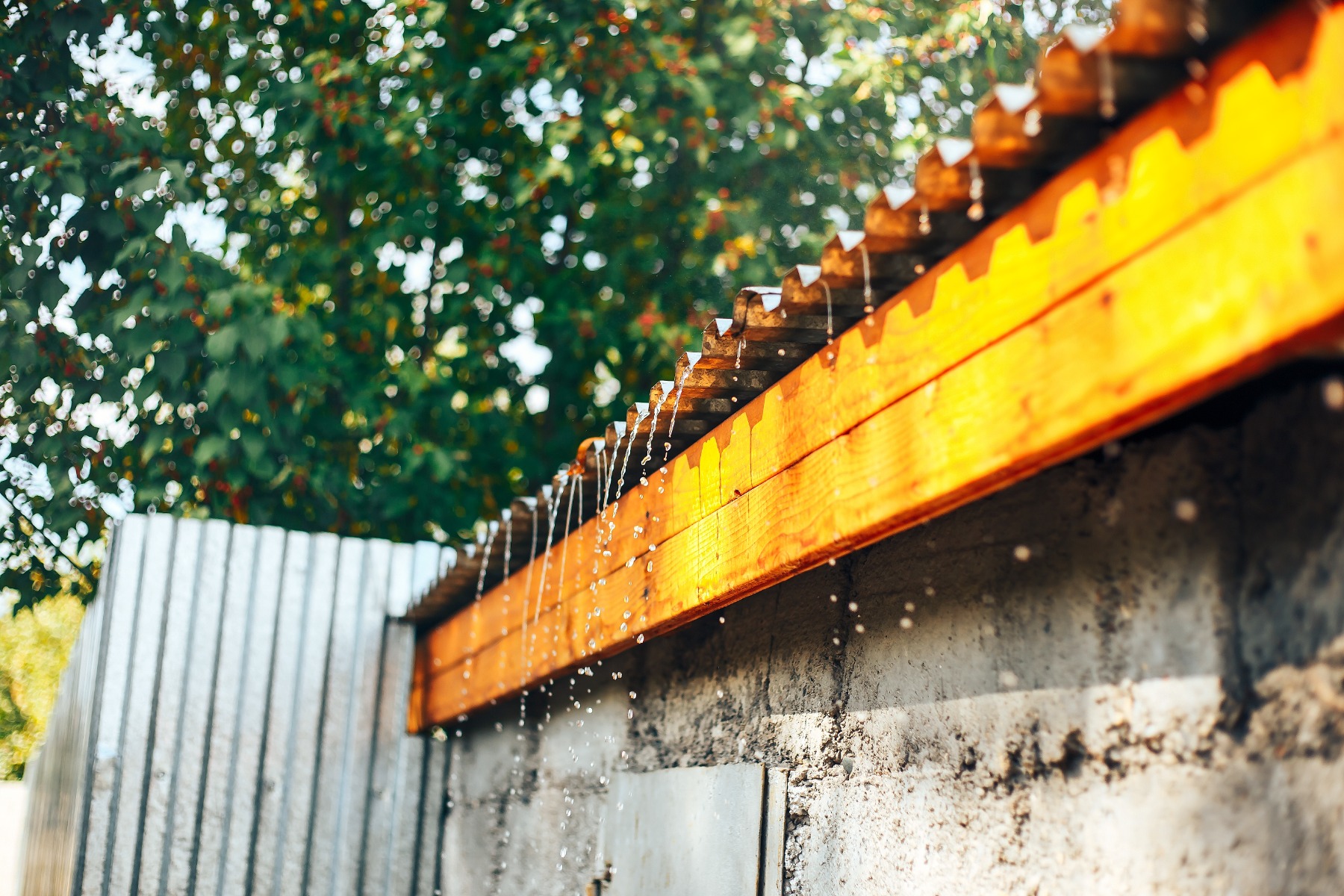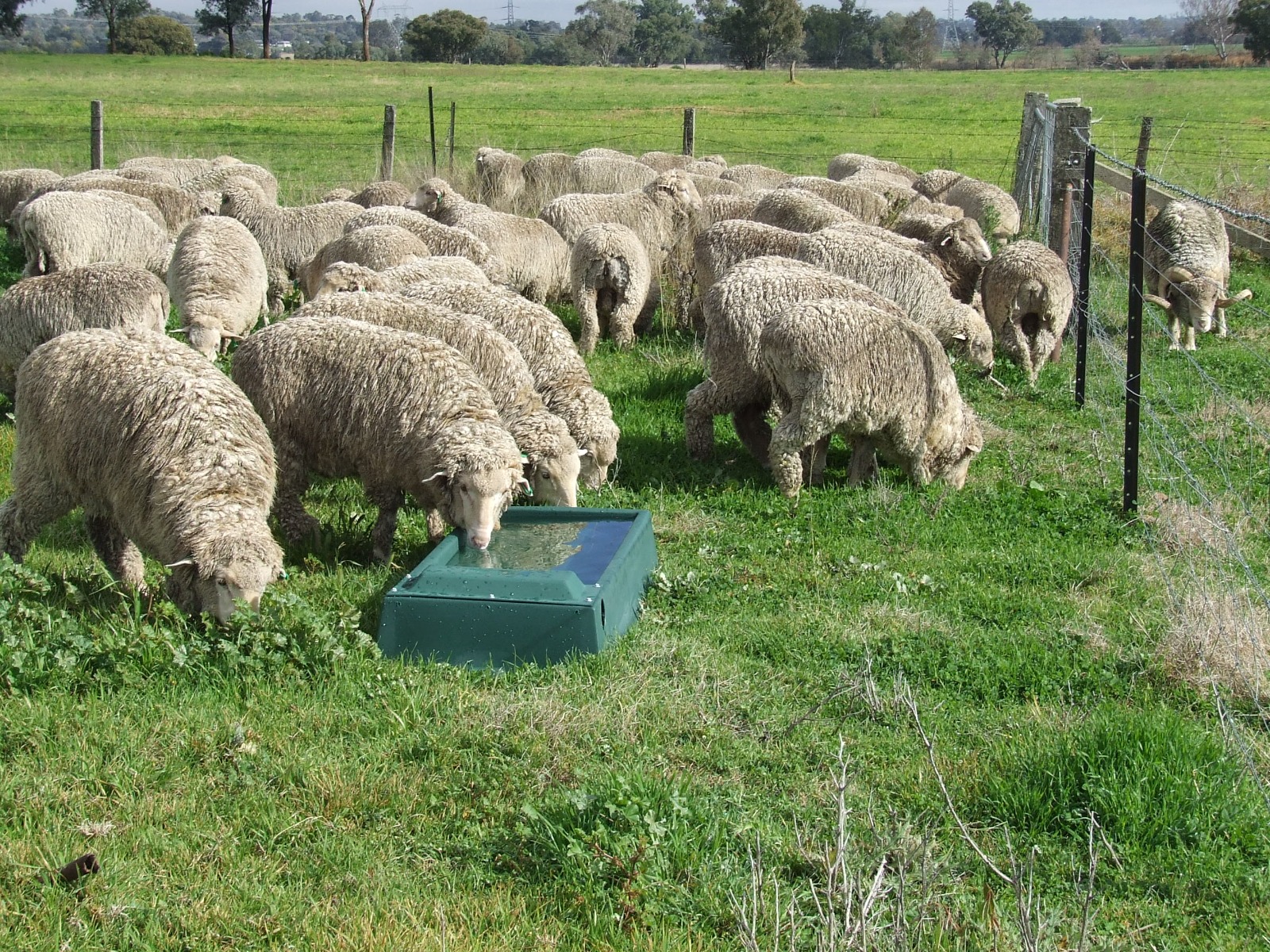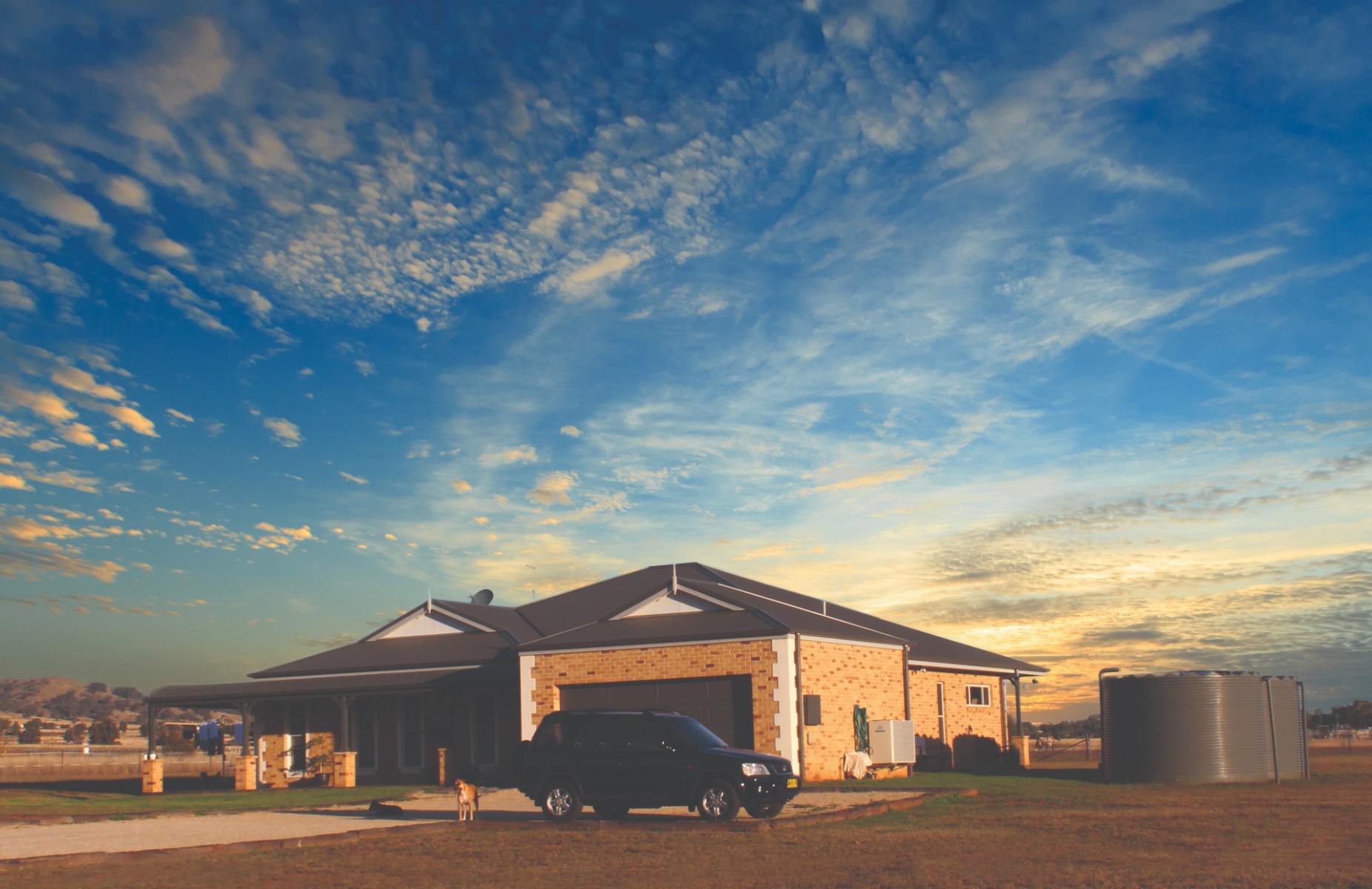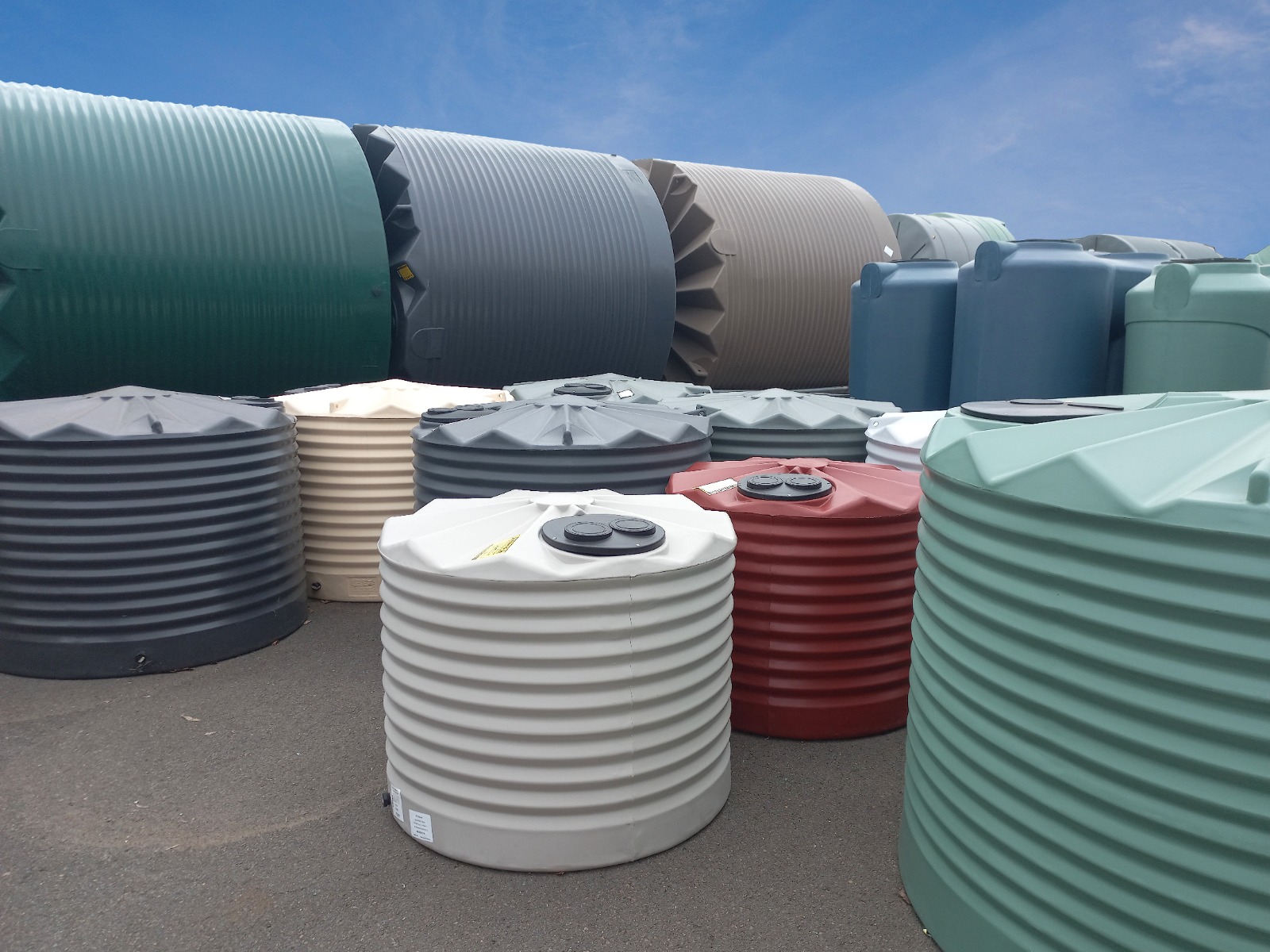-
A catchment system is the area onto which rainwater falls and is collected
-
A storage system that accumulates rainwater for future use
-
A delivery system that transfers water from its place of storage to its place of use
There are lots of reasons why people install rainwater collection systems and the intended purpose of the water will dictate the level of water quality that is required and the sophistication of the collection system.
For example, a rural property owner collecting water for fire-fighting purposes has little concern about water quality whilst a rural householder without a mains water supply will have much higher expectations about water quality for domestic use and consumption.
The key therefore is to build the collection system to reflect the intended use of the water.
The Flow of Rainwater to Your Tank
The catchment system is the roof area that collects rainwater and the network of gutters and downpipes that channels the water to storage tanks. The roof area can collect a variety of debris such as leaves, dust, pollen, insects and animal waste, and there are two key steps that can improve the quality of water being delivered to the tank.
The first is to install gutter guards which are plastic or metal screens fitted over gutters to prevent debris getting into the gutter and restricting free flow of water. The free flow of water in gutters ensures that water tanks fill more quickly when it rains and that the water is much cleaner as the gutter guards filter-out debris and contaminants.
The second option is to install a first-flush diverter. After a dry spell, the catchment area can be heavily contaminated with dust, decomposed insects and bird and animal droppings, and the first few minutes of rainfall effectively washes these contaminants into the gutters. A first-flush device prevents the contaminated water in the gutters and downpipes from entering the water tank by diverting the water into either stormwater drainage or a secondary storage container.
As rainwater is delivered to the water tank, it will pass through a fine strainer on top of the tank. As rainwater might contain a cocktail of dust, seeds and organic matter, if this is allowed to build-up on the strainer, weed growth can quickly occur and the roots can mat and clog the strainer and result in overflow. This can be inhibited by using a tight-fitting dust cover that starves plant matter of sunlight necessary for growth and by regular cleaning of the strainer. As the name implies, the dust cover prevents wind-blown contaminants entering the tank, but also prevents sunlight entering the water tank and inhibits algae growth and serves as a physical barrier to mosquitoes that lay their eggs in still water.
A rainwater tank is fitted with an overflow, and a pipe is typically connected to the overflow that directs water a few metres away from the tank. It is important that the discharge-end of the overflow pipe is fitted with an overflow screen that is a barrier to small animals such as frogs and insects.
The delivery system is often seen as the ‘business end’ of the rainwater collection system, and typically involves a pump and a filter. If the purpose of the rainwater is to water your garden, you’ll probably only need a pump, but different applications might require different filtration systems. Filter systems are typically single, double or triple systems.
Getting the Water Quality You Want
If you intend to use the water to top-up a swimming pool or for an evaporative cooling system, a single filter system will probably be adequate. If the water is for domestic purposes such as laundry, a double filter with a pre-filter and a fine filter would be recommended. If the water is intended for domestic consumption, a triple system of prefilter, fine filter and UV filter is recommended. A UV filter uses ultraviolet rays to penetrate harmful pathogens and destroy illness-causing microorganisms by attacking their genetic core. UV filtration kills 99.9% of bacteria and is environmentally friendly and chemical free.
Ready to find out more? Talk to our expert team to find out how to configure your rainwater collection system and how we can help you. Call our team on 1800 816 299 or email sales@rapidplas.com.au with your enquiry.


